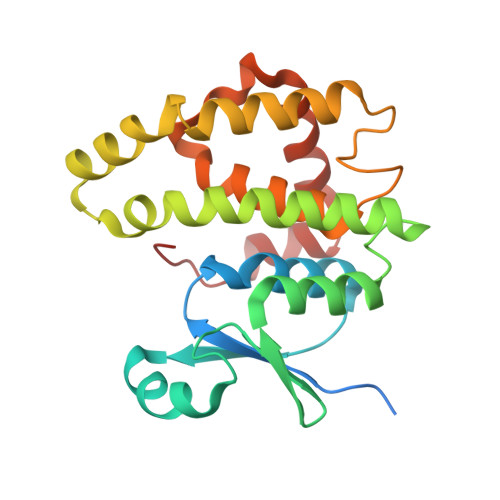Structure of the extracellular glutathione S-transferase OvGST1 from the human pathogenic parasite Onchocerca volvulus.
Perbandt, M., Hoppner, J., Burmeister, C., Luersen, K., Betzel, C., Liebau, E.(2008) J Mol Biology 377: 501-511
- PubMed: 18258257
- DOI: https://doi.org/10.1016/j.jmb.2008.01.029
- Primary Citation of Related Structures:
2HNL - PubMed Abstract:
Onchocerciasis or river blindness, caused by the filarial worm Onchocerca volvulus, is the world's second leading infectious cause of blindness. In order to chronically infect the host, O. volvulus has evolved molecular strategies that influence and direct immune responses away from the modes most damaging to it. The O. volvulus GST1 (OvGST1) is a unique glutathione S-transferase (GST) in that it is a glycoprotein and possesses a signal peptide that is cleaved off in the process of maturation. The mature protein starts with a 25-amino-acid extension not present in other GSTs. In all life stages of the filarial worm, it is located directly at the parasite-host interface. Here, the OvGST1 functions as a highly specific glutathione-dependent prostaglandin D synthase (PGDS). The enzyme therefore has the potential to participate in the modulation of immune responses by contributing to the production of parasite-derived prostanoids and restraining the host's effector responses, making it a tempting target for chemotherapy and vaccine development. Here, we report the crystal structure of the OvGST1 bound to its cofactor glutathione at 2.0 A resolution. The structure reveals an overall structural homology to the haematopoietic PGDS from vertebrates but, surprisingly, also a large conformational change in the prostaglandin binding pocket. The observed differences reveal a different vicinity of the prostaglandin H(2) binding pocket that demands another prostaglandin H(2) binding mode to that proposed for the vertebrate PGDS. Finally, a putative substrate binding mode for prostaglandin H(2) is postulated based on the observed structural insights.
- Institute of Biochemistry, Center for Structural and Cell Biology, University of Luebeck, Ratzeburger Allee 160, 23538 Luebeck, Germany. perbandt@biochem.uni-luebeck.de
Organizational Affiliation:

















